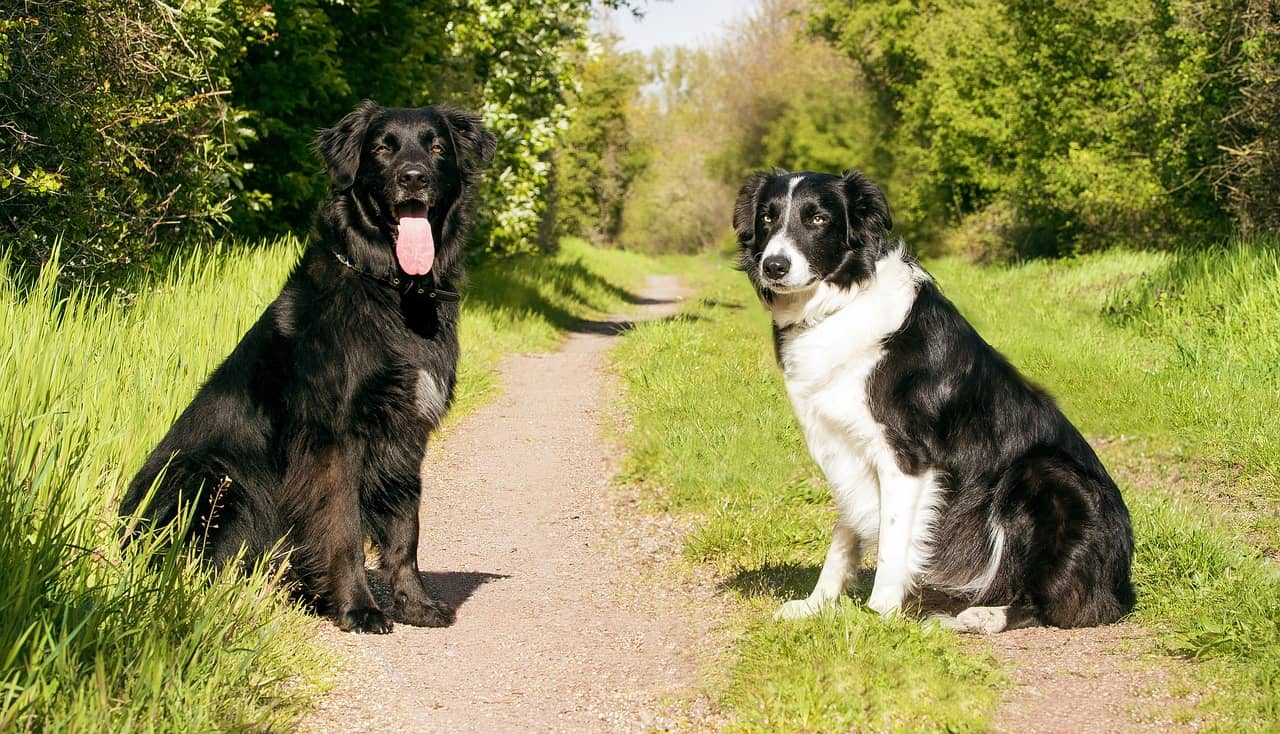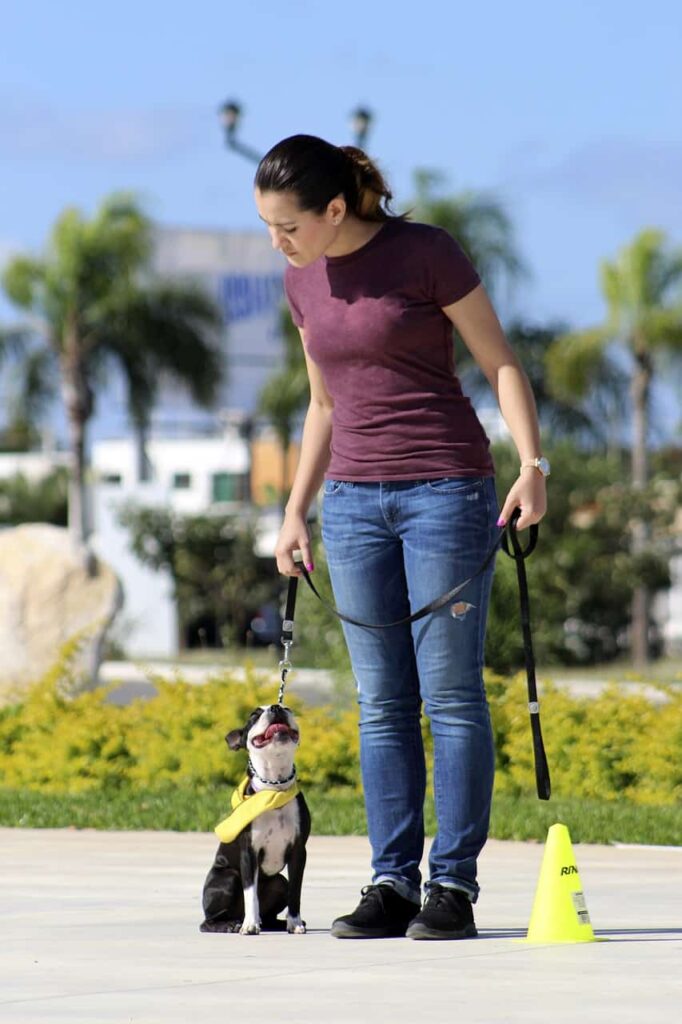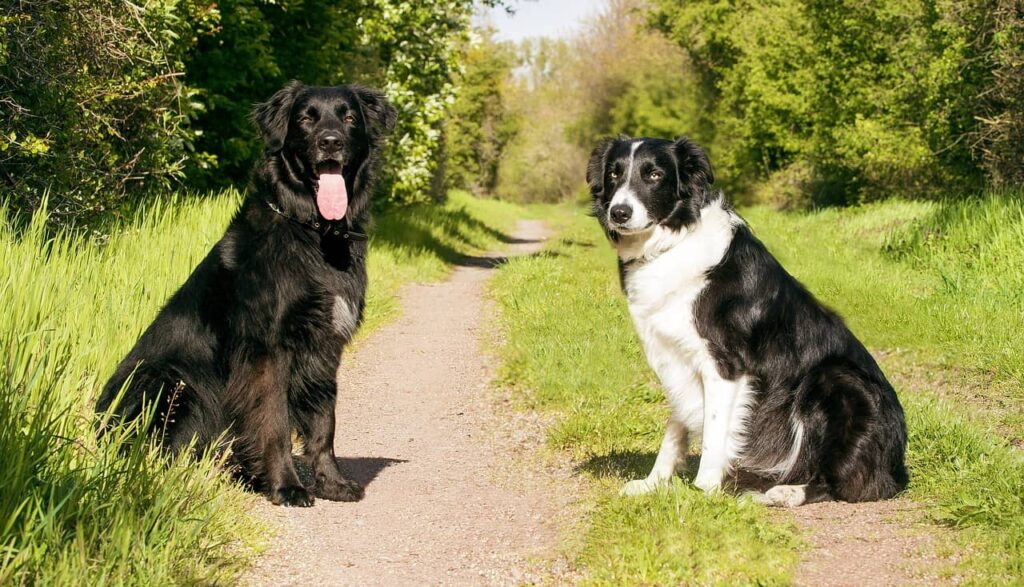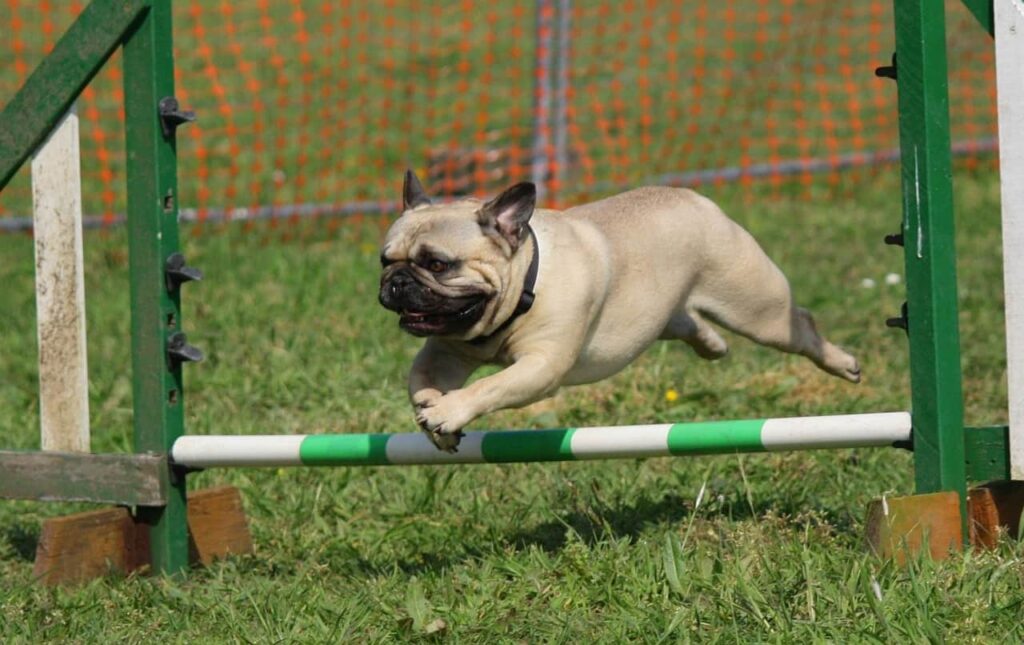Signs of a Jealous Dog: Recognizing the Warning Signals

Do you ever feel like your dog is giving you the side-eye when you give attention to other pets or family members? It’s not uncommon for dogs to display signs of a jealousy. But it’s important to recognize them before they escalate into destructive behavior.
In this blog, we will discuss the signs of a jealous dog and its root causes. We will also identify the warning signals your dog might be jealous of and how to manage their behavior .
Contents
- Understanding Canine Jealousy
- Identifying Signs of a Jealous Dog
- Aggressive Behavior
- Attention-seeking behavior
- Resource Guarding
- Destructive Behavior
- Inappropriate Toileting
- Leaving the Room
- Changes in appetite
- Avoidance behavior
- Managing Your Dog’s Jealousy
- Importance of Regular Training and Socialization
- Is Jealousy Harmful for Your Dog’s Mental Health?
- Are Certain Breeds More Prone to Jealousy?
- Why does my dog get jealous when I hug my partner?
- Conclusion
Understanding Canine Jealousy

Dogs, like humans, experience jealousy, and it can impact their behavior. Understanding the underlying causes of jealousy is key to addressing and managing it. Jealous dog behavior can manifest in various ways. Such as aggression, resource guarding, destructive behavior, and even pushing in or growling.
If your dog is possessive or jealous. They can show signs of problematic behavior, such as whining, gazing longingly at you, and taking any chance to clamber onto your lap. A possessive behavior dog can be pushy and insist on being between you and your partner.
It’s important to differentiate between a protective dog and a possessive dog since it doesn’t back down. If you notice these behaviors in your dog. It’s important to address them immediately to prevent them from escalating into more serious issues.
Recognizing these jealousy signals early on can help prevent unwanted behavior. And ensure a harmonious relationship between pets and their owners. It’s important to remember that jealousy in dogs is often a result of feeling insecure or fearing a lack of attention or love.
Providing them with a stable and loving environment, regular exercise, and training. It can go a long way in mitigating jealousy situations. By being aware of canine jealousy and taking the necessary steps to address it. Pet parents can foster a healthy and happy relationship with their furry companions.
Identifying Signs of a Jealous Dog
Recognizing signs of jealousy in a dog is important for pet parents. Jealous behavior can lead to aggressive behavior, growling, or snapping.
Aggressive Behavior
Signs of jealousy in dogs include growling, snapping, or displaying aggressive behavior towards other pets or family members. If your dog shows aggression, it could be a sign of jealousy.

Here are four common signs of aggressive behavior in dogs:
- Growling: Your dog may growl when they feel threatened or when they want to protect their resources.
- Snapping: Dogs may snap at other pets or family members to assert dominance or protect their possessions.
- Displaying aggressive behavior: This can include lunging, biting, or showing teeth. It’s important to address this behavior immediately to prevent any harm.
- Possessiveness: Dogs may become possessive over toys, food, or their owners, leading to aggressive behavior towards others.
Understanding these signs of aggression can help you identify and address jealousy in your dog. Promoting a safe and harmonious environment for everyone.
Attention-seeking behavior
When it comes to dogs getting jealous, one common behavior to look out for is attention-seeking. Dogs may exhibit this behavior to compete for your attention and resources. They may push between you and the person or pet they’re jealous of, crowd your space, or even perform tricks to seek attention.
Recognizing and addressing this attention-seeking behavior is crucial to managing jealousy and preventing dog aggression. Remember to give your dog attention and provide mental and physical stimulation to meet their needs.
Resource Guarding
Resource guarding is another common sign of jealousy in dogs. This behavior occurs when a dog becomes possessive over certain objects, such as toys, food, or even their owners.
Signs of resource guarding may include growling or snarling. When someone approaches their belongings, they have a stiff posture, or an intense stare.
To address resource guarding. It’s important to establish clear boundaries and reinforce positive behaviors. Gradual desensitization exercises help your dog feel more comfortable and less threatened .
Destructive Behavior
Jealousy in dogs can manifest as destructive behavior, including chewing, digging, or scratching. Pet parents must recognize the signs of jealousy-related destructive behavior. Appropriate outlets such as toys, exercise, and mental stimulation can help prevent such behavior.
Here are four signs of dogs getting jealous and exhibiting destructive behavior:
- Chewing on furniture or personal belongings: Your dog may destroy items. That smells like you or that they associate with the person or pet, they’re jealous of.
- Scratching or digging: Jealous dogs may engage in destructive behavior, like scratching doors or digging up the yard, to release their frustration.
- Excessive barking or howling: Dogs may use loud vocalizations to get your attention and express jealousy towards others.
- Urinating or defecating indoors: Some dogs may mark their territory or express jealousy by eliminating inappropriate places.
Positive reinforcement training is an effective way to redirect a dog’s energy towards more appropriate actions. Also, addressing the underlying issue of jealousy can help reduce destructive behavior in dogs.
Destructive behavior can also indicate a health issue or lack of exercise, so consulting a veterinarian is always a good idea. Remember, dogs are social animals, and ensuring they receive enough love, attention, and mental stimulation is key to preventing destructive behaviors.

Inappropriate Toileting
Sometimes, a dog’s jealous behavior can manifest as inappropriate toileting, such as urinating or defecating indoors. Pet parents need to recognize the signs of jealousy-related inappropriate toileting.
Establishing a consistent routine, providing regular potty breaks, and implementing positive reinforcement training techniques can help address this behavior.
Leaving the Room
When a dog becomes jealous, they may resort to leaving the room as a form of expressing their frustration. This behavior is often accompanied by a noticeable change in body language, such as tail tucking or avoiding eye contact. Pet parents need to recognize these signs and address the underlying issue.
To help your dog cope with jealousy, create a safe and comfortable space where they can retreat when feeling overwhelmed. This can be a designated area with their favorite toys or bedding. Additionally, practicing positive reinforcement training techniques and providing mental stimulation can help redirect their energy more positively.
Changes in appetite
Dogs experiencing jealousy may exhibit changes in appetite as a sign of jealousy. Here are four common changes in appetite that may indicate jealousy in dogs:
- Decreased appetite: Your dog may lose interest in their food or eat less than usual when they feel jealous.
- Increased appetite: On the other hand, some dogs may eat more when they’re feeling jealous as a way to cope with their emotions.
- Food guarding: Jealous dogs may become possessive of their food and show aggression if approached while eating.
- Food stealing: Dogs may try to steal food from other pets or even from their owners as a display of their jealousy.
Avoidance behavior
When dogs feel jealous, they may exhibit avoidance behavior to cope with their emotions. Jealousy can lead to aggression, so it’s important to help your dog cope with these feelings.
Signs of a jealous dog behavior include hiding, turning away, or avoiding eye contact. Your dog may also try to distance themselves from the source of their jealousy.
Recognizing and addressing these avoidance behaviors can help prevent aggression and create a more harmonious environment for your dog.
One of the common triggers for jealousy in dogs is playtime. If your dog shows jealousy during playtime, it may become aggressive towards other pets or people involved.
Managing Your Dog’s Jealousy
To ensure a harmonious household, managing your dog’s jealousy is crucial. Regular training and socialization play a significant role in addressing this issue.
By providing a structured routine and enough attention, you can help reduce jealousy and unwanted behavior in your dog. Regarding dog-on-dog jealousy, introducing proper obedience skills, crate training, and leash behavior can be effective.
Professional guidance is also recommended to create a tailored plan that addresses and alleviates dog jealousy.
jealousy situations can arise when a new baby, small child, or even another pet enters the picture. It’s important to address any signs of possessive or protective behavior in your dog.
By understanding and addressing your dog’s jealousy, you can ensure a happy and balanced environment for you and your furry friend.
Regular training and socialization are crucial in managing a dog’s jealousy.

By providing consistent training. You can establish boundaries, obedience, and good behavior in your dog. Which in turn helps reduce jealousy-related issues. Training helps your dog understand expected behavior. Help empower them with the tools to navigate jealousy situations .
Dogs need to be socialized to experience new things, people, and animals. This makes them less protective and more comfortable. You can help your dog feel less protective and jealous by exposing them to new things, places, and experiences.
This exposure helps them understand that there is no real threat and that they don’t need to be continually on high alert.
For the best results, you need to be consistent. Your dog should get regular exercise and playtime with other dogs every day. Take your dog to behavior classes or talk to a professional dog trainer. It can help you figure out the best way to train and socialize your dog based on its individual needs. Remember that a dog that is well-trained and good with other dogs is happy and calm.
Is Jealousy Harmful for Your Dog’s Mental Health?
Jealousy can negatively impact a dog’s mental health, leading to emotional stress, anxiety, and aggression. Recognizing signs of jealousy is crucial to address them promptly and ensure the dog’s overall well-being. P
roviding a balanced environment, routine, exercise, and attention can help prevent jealousy-related mental health issues in dogs. Consult a veterinarian or behaviorist if needed.
Are Certain Breeds More Prone to Jealousy?
Even though dogs of all breeds can be jealous, some breeds may be more likely to show this feeling. Labrador Retrievers, German Shepherds, and Maltese may act more than other breeds. Because they are known for being very loyal and attached to their owners.
Dogs that are good guard dogs. like Doberman Pinschers and Rottweilers, also act protective and jealous when other people or animals approach their owners.
But it’s important to remember that a dog’s behavior is also affected by its personality and upbringing.
Why does my dog get jealous when I hug my partner?
If you hug your partner, your dog may become jealous and display signs of possessiveness. Jealousy in dogs can lead to aggressive behavior, as they perceive your attention to your partner as threatening their status.
Dogs are naturally territorial and may need to protect their resources, including your affection. It’s important to understand and address this jealous behavior to ensure a harmonious relationship with your dog.
Conclusion
It is important to recognize signs of a jealous dog as it can impact their mental health and well-being. By understanding the root causes of jealousy and identifying the warning signals. You can take steps to manage and address this behavior.
Source:-
https://www.ncbi.nlm.nih.gov/pmc/articles/PMC4108309/
https://www.akc.org/expert-advice/lifestyle/do-dogs-feel-jealousy-or-envy/






